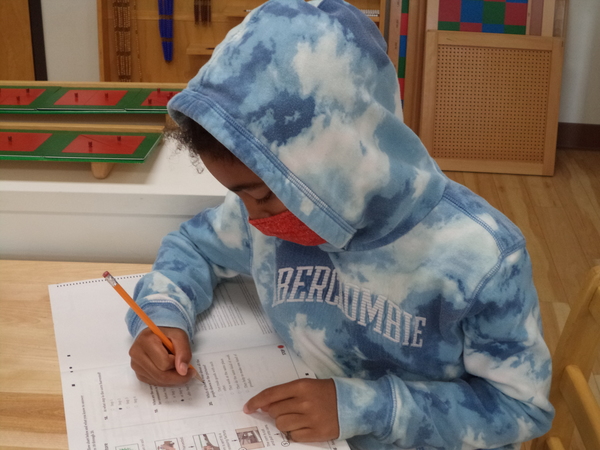(858) 759-0631
Today I am going to write about how the child's experiences in the areas of geography, biology, and general science in primary make the transition into elementary.
From the very beginning, the primary children receive stories about people in other places, plants, and animals in the environment. When they are ready, they begin working with such concrete materials as puzzle maps, and the leaf cabinet. These activities come directly from the Sensorial area of the class. Eventually, vocabulary is added and children start to perform simple science experiments such as sink and float. All of these activities prepare the children to enter into the elementary class prepared to take their fund of knowledge to a new level. In elementary, the study of geography includes the formation of the universe, the earth, and all the elements therein. This is where we start. Then comes a series of experiments that explore the nature of matter, different types of matter, and how different substances react to each other. As each new chapter of geography unfolds, the children are learning general concepts and terms followed by hands-on activities that illustrate the concepts.
Biology is studied in much the same way, except there are many opportunities for the children to get out where the plants and animals live and have a look. When you give them an isolated concept to look for (how leaves are arranged on a stem to give them the most sunlight, for example), interest follows. The children look at how many different ways plants and animals follow the "rule" that they "eat, grow and make others like themselves." Then comes the more advanced work of scientific classification. This work starts early and gains in complexity into the later elementary years.
In both geography and biology, the children are exposed to science experiments that allow them to explore the various concepts being presented. Experiments are presented in a three-stage manner. First, the teacher or guide performs the experiment as part of a lesson on a general concept. Then, if a child or group of children are interested in that experiment, they are invited to perform it while being supervised by the teacher or guide. The last step is when the children have mastered the skills needed to experiment, they are invited to carry it out alone. This can take quite some time since some of the experiments involve heat and a combination of substances to produce chemical reactions. The children are never left alone with the chemicals and chemicals are available in the class only by the teacher who keeps them locked away. Again, this work starts early with simpler scientific concepts and then grows throughout the years in complexity and requirement of skills.
So, you see, all the work in the primary in the Sensorial area translates into a more concrete application in the elementary, following the development of the child from the first to the second plane of development. Isn't Montessori great?
-Mrs. Stone, Millipede Teacher

